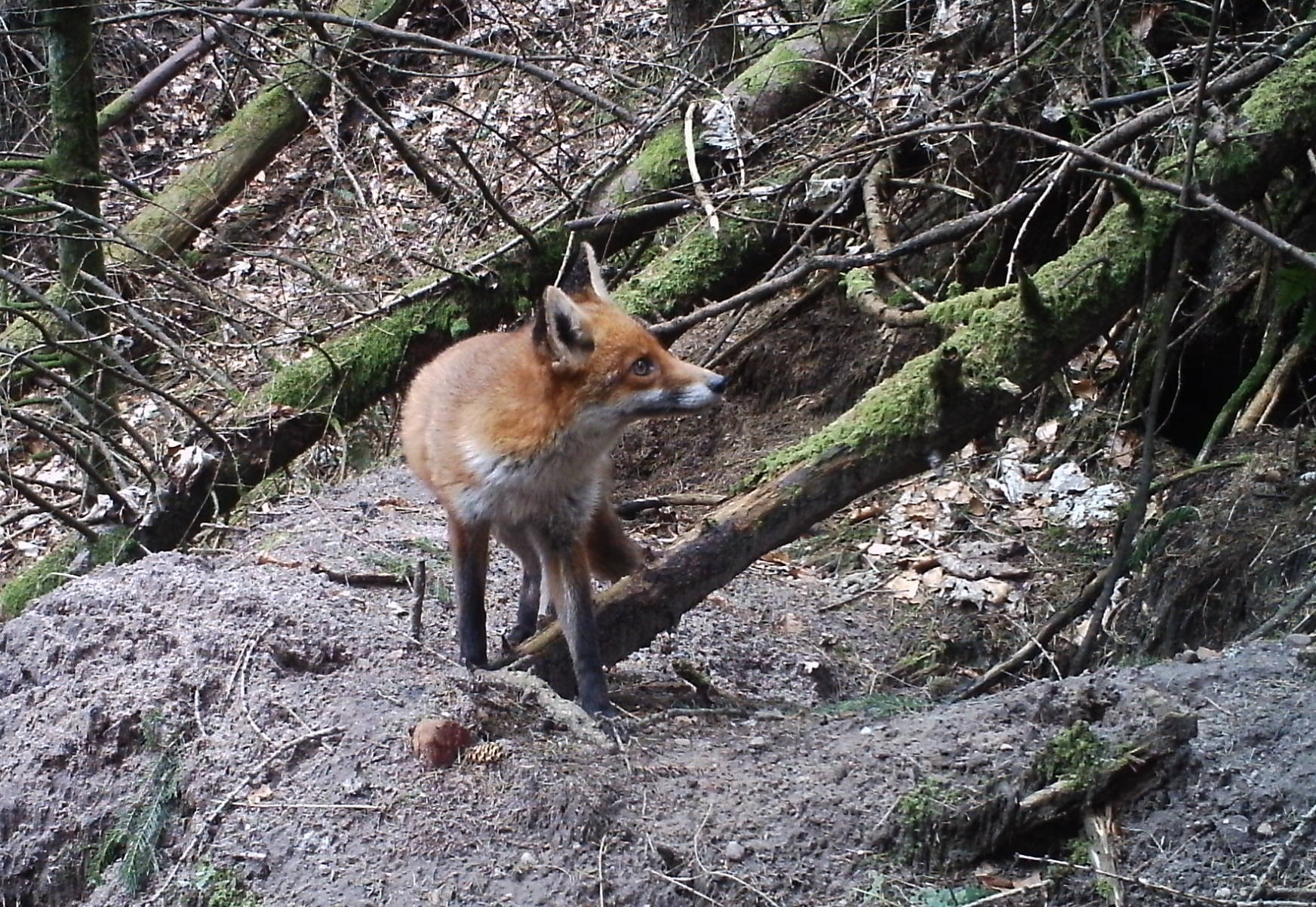Using my trail-cam, I’ve been monitoring the comings and goings at a fox’s den in a wood in Strathdevon – and boy, there has been a lot going on.
Foxes are a passion of mine and I’ve been studying them ever since a teenager. It is remarkable the way things have changed over the years and as I went to retrieve the camera the other week I reflected on how much easier it is to study fox behaviour nowadays with the help of new-fangled technology.
Then, in the late 1970s and early 1980s, I would spend many cold hours up trees and perched on walls observing Edinburgh’s urban foxes. Often, I would draw a blank, other times just catching a fleeting glimpse of an animal in the gloaming. In short, it was nigh-on impossible to learn much about their patterns of activity.
But now with my trail-cam, I can leave it by a fox den and get a multitude of photographs with information on the time and date of any activity. I also have the luxury of being able to identify individual foxes by variations in their coat pattern or shape of their brushes. True, nothing can beat seeing an animal in the flesh, but as a means for study, a camera trap is hard to beat.
The den I’m currently monitoring is remote and well-hidden on a slope amongst fallen larch trees and tangled branches. Much of the ground in the wood is heavy and damp, but in this little spot the soil is sandy – the ideal place to dig a tunnel.
Most recently, over a 10 day period, my sensor-operated camera snapped over 150 photographs at this site. Things are really hotting-up there and the frequency that the vixen and dog fox are visiting the den means there are almost certainly cubs below, although they are still too young to venture above ground.
From the photographs, a relatively consistent pattern emerges. The vixen normally exits the den at about 8.45pm and makes her final return in the morning at around 5.50am. But within that overnight period, there are up to 19 different visits to the den by both the vixen and to a lesser extent the dog fox.
Interestingly, on several days the vixen would also emerge during the middle of the afternoon and return an hour or so later, as shown in the picture here. Perhaps she is tired of suckling her cubs in the cramped underground confines and comes above ground to enjoy a wee spell of daytime respite.
Country foxes are much more skittish than their city cousins, so I’ll need to tread carefully over the coming weeks when setting the camera so as not to cause any disturbance. If the vixen feels something is amiss, she will in the blink of an eye move her cubs to a new den. Sometimes youngsters are even relocated on a whim – such is the caution that hallmarks the deeply engrained survival instincts of the fox.
Info
Foxes typically have four cubs in a litter. The cubs are renowned for their playful behaviour and will stay together as a family until September when they have reached adult size.










